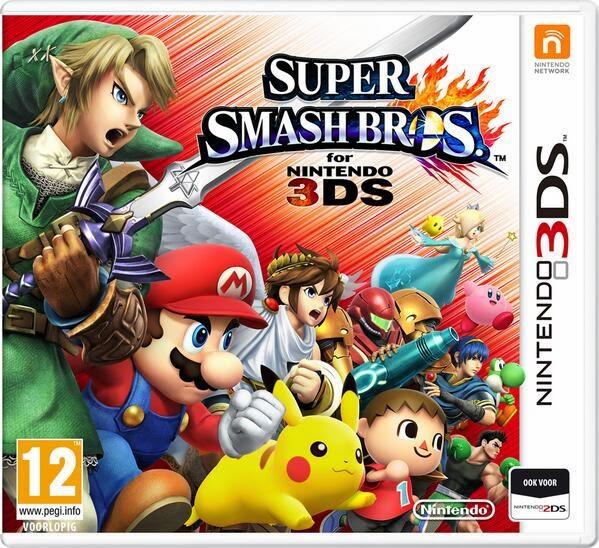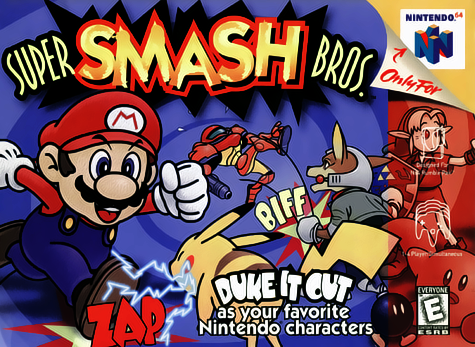Super Smash Bros. hit 3DS shelves; Wii U version to follow up

As the fourth installment in the series, Super Smash Bros. 3DS is the first title to be portable. It was released in the US on October 3, six years after the release of Brawl.
Six years of speculation, three years of hype, two years of development, and a year of impatience all led up to one day.
On October 3, the US saw the release of Super Smash Bros. for Nintendo 3DS, often referred to just Super Smash Bros. 3DS. Published by Nintendo and developed jointly between Nintendo, Sora Ltd. and Bandai Namco (the creators of Kid Icarus: Uprising and Pac-Man, respectively), Super Smash Bros. 3DS serves as the fourth installment of the Super Smash Bros. series and the first installment to be a portable game as opposed to a home console game like its predecessors.
Super Smash Bros. 3DS follows the same gameplay found in previous installments. Players choose a character and fight in a battle in order to win, whether it’s getting the most knock-outs in a timed match or expiring the lives of other players in a stock match. As the opponents attack the player’s character, his or her damage meter goes up; as it gets higher, the character has a greater chance of getting knocked off stage. In order to win the battle, players must dodge, use various items such as Poké Balls or Assist Trophies, and fight back with standard attacks (using the control stick and “A” button on the controller) or smash attacks (using the control stick and “B” button on the controller). Players may also have a chance to unleash a Final Smash – a super-attack found only in the form of a breakable Smash Ball – on their foes to assure victory in a spectacular manner.
Asides from the standard Smash mode, players can also embark in Classic mode, where they can set their own difficulty, gamble coins for extra rewards, and complete six different stages. New to the series is the fact that, instead of a predetermined pattern, players can choose which paths to take and which opponents to face. For example, suppose a player had to choose from one of three paths, each leading to fighting characters from Super Mario Bros, The Legend of Zelda, or Pokémon. If a player didn’t like Super Mario Bros or Pokémon, then he or she can opt for The Legend of Zelda path.
All-Star Mode is also available, allowing players to fight all characters from certain timelines in multiple stages. Unlike Classic Mode, however, damage will not revert back to 0% after completing each stage. Rather, a few, one-time use items will be given to heal damage. Players can also engage in Multi-men Smash Battles, Home Run contests, and Target Blast mini-games as well as a Practice mode to enhance fighting skills.
Exclusive to the 3DS are two extra modes: Smash Run and StreetSmash. Smash Run has the player battle enemies for five minutes in a maze-like setting and collect items that increase stats such as Attack or Defense. After the five minutes is up, players compete in a mini-game with their upgraded stats. StreetSmash utilizes the 3DS’s StreetPass function, which allows players to connect with others who pass by on-the-go. StreetSmash’s objective is rather simple: knock discs off of the stage.
Each mode has similar gameplay elements as described above, so the learning curve isn’t high, making the transition from one mode to another easy. Playing these modes also unlocks new characters, stages, music, and trophies for players to experience and enjoy. By completing certain objectives, players can also complete the Challenge map and earn extra rewards, whether it’s gold to spend in the trophy shop or Trophy Rush mini-game, more challenges, or more trophies. Customizable moves can also be unlocked for fighters, and items buffing a fighter’s Attack, Defense, and Speed stats can be unlocked for Smash Run and Smash Mode.
This game features 51 playable characters, more than any other installment in the franchise. The roster includes Nintendo classics from multiple series: Mario and Luigi from Super Mario Bros, Pikachu and Charizard from Pokémon, Link and Zelda from The Legend of Zelda, Pit from Kid Icarus: Uprising, and Marth and Ike from Fire Emblem. Among the numerous newcomers are Lucina and the Avatar (Robin) from Fire Emblem Awakening, the Villager from Animal Crossing, Palutena from Kid Icarus: Uprising, and Rosalina from Super Mario Galaxy. Since third party developers like Bandai Namco helped to develop the game, Super Smash Bros. 3DS also features third party characters such as Sonic from Sonic the Hedgehog, Mega Man from Mega-Man, and Pac-Man from Pac-Man.
Supporting this massive amount of characters are at least 30 stages, smooth animations and designs, and outstanding music scores and remixes. With such a wide variety of characters and stages, players can employ multiple strategies to defeat opponents and win matches. This variety leads to many hours spent replaying the game to experience each fighter’s style and each stage’s charm.
However, despite the positives of the game modes and variety, Super Smash Bros. 3DS has some problems with overall development. The control is a bit too stiff for a fighting game. The Circle Pad on the 3DS and the little A, B, Y, and X buttons make it somewhat difficult to perform the player’s exact move due to the close proximity of the buttons and the rigidity of the Circle Pad. Also, the global Wi-Fi matches sometimes exhibit lag and slow-down that may hinder gameplay and connectivity. The local Wi-Fi matches somewhat alleviate this problem, but some slowdown still happens from connectivity or too much activity.
Smash Run is also underwhelming. The problem isn’t found in the five minute battling period: the problem is found in the mini-game played afterward. The mini-game is randomized between races, jumping contests, or standard one-minute timed matches. This either helps or hurts the player since they can prioritize on one stat but neglect the others. Customization sometimes adds to this problem as well. However, players have the option to turn customization off.
Super Smash Bros. for Wii U, the sister game to Super Smash Bros. 3DS, will feature the same character roster and gameplay mechanics. However, it will not feature most of the stages, music, and game modes found exclusively on the 3DS. Super Smash Bros. for Wii U is set to release in the US towards the end of 2014.
In its own right, Super Smash Bros. 3DS is fantastic. With the amount of modes to choose from, the variety of characters and stages, beautiful animation and music, and portability, Super Smash Bros. 3DS satisfies fans of the previous installments and welcomes new players with open arms.
Your donation will support the student journalists of Klein High School. Your contribution will allow us to purchase equipment and cover our annual website hosting costs.


